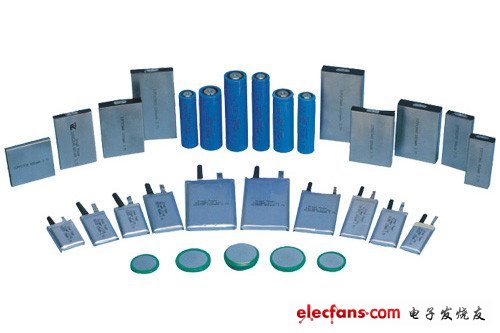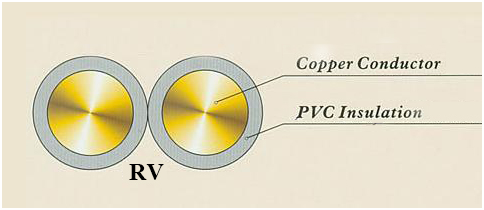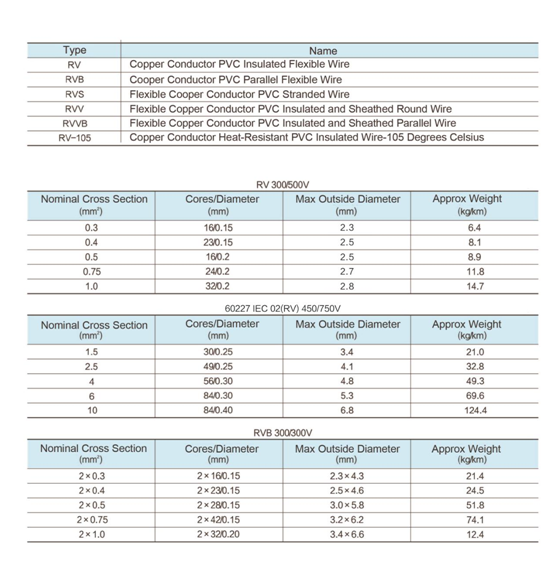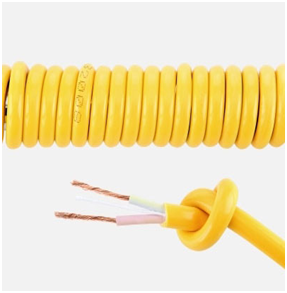Lithium-ion batteries, which are now widely used by everyone, are developed from lithium batteries. So before we get to know the lithium-ion battery, let's introduce the lithium battery.
For example, the button battery used in the previous camera was a lithium battery. The negative electrode material of the lithium battery is lithium metal, and the positive electrode material is carbon material. According to the customary naming rules, we call this battery a lithium battery.
The positive electrode material of the lithium ion battery is lithium cobalt oxide, and the negative electrode material is carbon material. The lithium ion generated by the battery through the positive electrode is embedded and moved out in the negative carbon material to realize the charging and discharging process of the battery. In order to distinguish it from the lithium battery in the conventional sense, it is called a lithium ion battery.

Wide use of lithium ion batteries
The purpose of developing high technology is to make it better serve humanity. Since its inception in 1990, lithium-ion batteries have been rapidly developed due to their superior performance and are widely used in society. Lithium-ion batteries quickly occupy many fields with the incomparable advantages of other batteries, such as mobile phones, notebook computers, small cameras, etc., which are well known, and more and more countries use the battery for military purposes. Applications have shown that lithium-ion batteries are an ideal small green power source.
The main components of lithium-ion batteries
(1) battery cover
(2) The positive electrode----active material is lithium cobalt oxide
(3) Separator----a special composite membrane
(4) Negative electrode----active material is carbon
(5) Organic electrolyte
(6) battery case
Superior performance of lithium-ion batteries
The advantages of lithium-ion batteries we often say are for traditional nickel-cadmium batteries (Ni/Cd) and nickel-hydrogen batteries (Ni/MH). So, where is the lithium-ion battery?
(1) High working voltage
(2) Larger than energy
(3) long cycle life
(4) Low self-discharge rate
(5) No memory effect
(6) No pollution
The following is a comparison of the performance of nickel-cadmium, nickel-metal hydride, and lithium-ion batteries:
Technical parameters nickel-cadmium battery nickel-hydrogen battery lithium-ion battery
Working voltage (V) 1.21.23.6
Weight ratio energy (Wh/Kg) 5065011-40
Volume specific energy (Wh/l) 150200300
Charge and discharge life (times) 5005001000
Self-discharge rate (% / month) 25-3030-356-9
Whether there is a memory effect
Whether there is pollution or not
(Note: The charging rate is 1C)
How lithium-ion batteries work
As we all know, the positive electrode material of a lithium ion battery is lithium cobalt oxide, and the negative electrode is carbon.
The working principle of lithium-ion battery refers to its charging and discharging principle. When the battery is charged, lithium ions are generated on the positive electrode of the battery, and the generated lithium ions move to the negative electrode through the electrolyte. The carbon as the negative electrode has a layered structure, and it has many micropores. The lithium ions reaching the negative electrode are embedded in the micropores of the carbon layer, and the more lithium ions are embedded, the higher the charging capacity.
By the same token, when the battery is discharged (ie, the process we use the battery), the lithium ions embedded in the carbon layer of the negative electrode come out and move back to the positive electrode. The more lithium ions return to the positive electrode, the higher the discharge capacity. What we usually call battery capacity refers to the discharge capacity.
It is not difficult to see that during the charging and discharging process of the lithium ion battery, the lithium ion is in a state of motion from the positive electrode to the negative electrode to the positive electrode. If we compare the lithium-ion battery to a rocking chair, the two ends of the rocking chair are the two poles of the battery, and the lithium ion is like an excellent sportsman, running back and forth at both ends of the rocking chair. Therefore, the experts gave the lithium-ion battery a cute name rocking chair battery.
Lithium-ion battery assembly process
The process technology of lithium-ion batteries is very strict and complicated. Here are just a few of the main processes.
(1) Pulping
The powdered positive and negative active materials are mixed with a special solvent and a binder, and stirred at a high speed to form a slurry of positive and negative materials.
(2) Coating film
The prepared slurry was uniformly coated on the surface of the metal foil, and dried to prepare positive and negative electrode sheets, respectively.
(3) Assembly
According to the positive electrode sheet--separator--negative electrode sheet--the separator is placed in the order from top to bottom, and the battery core is wound up, and then the process of injecting the electrolyte and sealing is completed, that is, the assembly process of the battery is completed. Into the finished battery.
(4) Chemical formation
Charge and discharge the finished battery with a dedicated battery charge and discharge device, test each battery, and filter out the qualified finished battery, waiting for delivery.
Safety features of lithium-ion batteries
Lithium-ion batteries have been widely used in people's daily lives, so its safety performance should definitely be the first indicator of lithium-ion batteries. For the safety performance evaluation indicators of lithium-ion batteries, very strict standards have been set internationally. A qualified lithium-ion battery should meet the following conditions in terms of safety performance.
(1) Short circuit: no fire, no explosion
(2) Overcharge: no fire, no explosion
(3) Hot box test: no fire, no explosion (150 °C constant temperature 10 min)
(4) Acupuncture: no explosion (penetrate the battery with Ф3mm nail)
(5) Flat impact: no fire, no explosion (10kg weight from 1M high to battery)
(6) Incineration: no explosion (gas flame barbecue battery)
How is the safety feature of lithium-ion batteries realized?
In order to ensure the safe and reliable use of lithium-ion batteries, experts have carried out a very strict and thorough battery safety design to achieve battery safety assessment indicators.
(1) diaphragm 135 ° C automatic shutdown protection
Adopt international advanced Celgard 2300PE-PP-PE three-layer composite film. When the temperature rises to 120 °C, the PE film holes on both sides of the composite film are closed, the internal resistance of the battery is increased, and the internal temperature rise of the battery is slowed down. When the battery temperature rises to 135 °C, the PP film hole is closed, the battery internal circuit is broken, and the battery is no longer used. Warm up to ensure the battery is safe and reliable.
(2) Adding additives to the electro-hydraulic
Under the condition that the battery is overcharged and the battery voltage is higher than 4.2v, the electro-hydraulic additive is polymerized with other substances in the electro-hydraulic, the internal resistance of the battery is increased, and a large-area circuit is formed inside the battery, and the battery is no longer heated.
(3) Battery cover composite structure
The battery cover adopts a scoring explosion-proof structure. When the battery is warmed up, part of the gas generated during the activation process of the battery expands, the internal pressure of the battery increases, and the pressure reaches a certain degree of cracking and deflation.
(4) Various environmental abuse tests
Carry out various abuse tests, such as external short circuit, over charge, acupuncture, plate impact, incineration, etc., to examine the safety performance of the battery. At the same time, the battery is subjected to temperature shock test and mechanical tests such as vibration, drop and impact, and the performance of the battery under actual use environment is investigated.
Lithium-ion battery is a new type of green battery
"Caring for the environment and protecting the earth" is our unshirkable responsibility. How do we reflect our environmental philosophy in action?
As a battery consumer, you should buy and use new green batteries; as a battery manufacturer, you should produce new green batteries. Only through the joint efforts of all can we create and protect our beautiful and harmonious natural environment.
The new green battery refers to a class of high-performance, pollution-free batteries that have been put into use or are being developed in recent years. Lithium-ion batteries, metal hydride nickel batteries, and mercury-free alkaline zinc-manganese batteries that are currently being widely used, and lithium or lithium ion plastic batteries, fuel cells, and electrochemical energy storage supercapacitors that are being developed are all new types. The scope of green batteries. In addition, solar cells (also known as photovoltaic power generation) that use solar energy for photoelectric conversion, which are widely used at present, belong to this category.
PVC insulated flexible wire refers to electrical wires with excellent flexibility. This kind of wire adopts pvc insulation, which is very resistant to corrosion, impact, abrasion, weathering, and even chemical rotting, therefore it can well protect the inside conductor and ensure large electricity transmission capacity. Also the wire has a decent mechanical strength, presenting a super performance when acted by mechanical force. This wire finds its application in household appliances, Mini Electric Tools, instruments, lighting & other electrical equipment.
Advantages:
- Corrosion & abrasion resistant
- Resistance to breakage
- Large tensile strength
- Good moving performance
- Good softness
- Excellent elasticity and stickiness
- Resistance to skin effect
- Long life span


Standard:
GB/T5023.3-2008
Rated Voltage:
450/750V

Application:
- Household electrical appliances
- Small electric power tools
- Instruments
- Apparatuses
- Lighting devices
- And many more...
Welcome to visit our factory to learn more about us. If you have any questions, please feel free to contact us.
PVC Insulated Flexible Wire,Flat PVC Jacket Flexible Wire,PVC Jacket Flexible Wire,Flat Flexible PVC Insulated Wires
Fujian Lien Technology Co.,Ltd , http://www.liencable.com